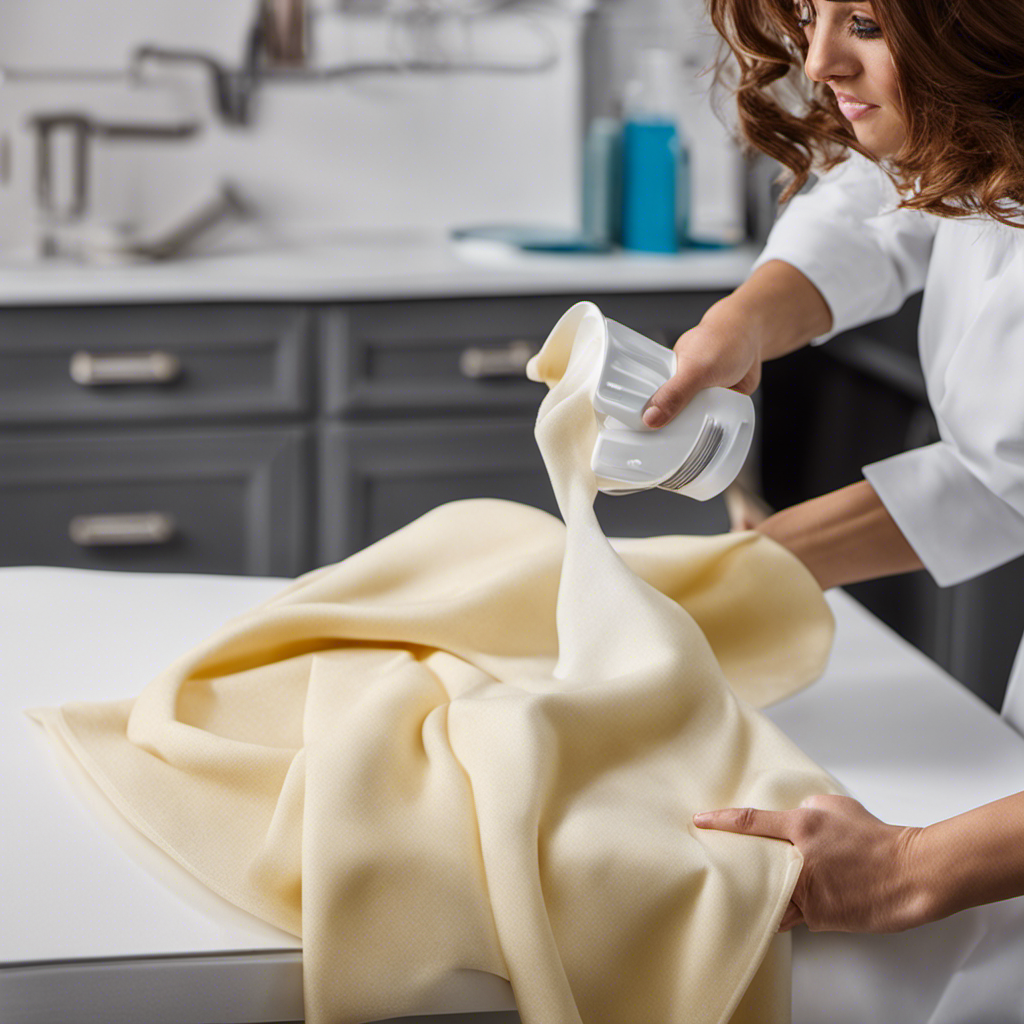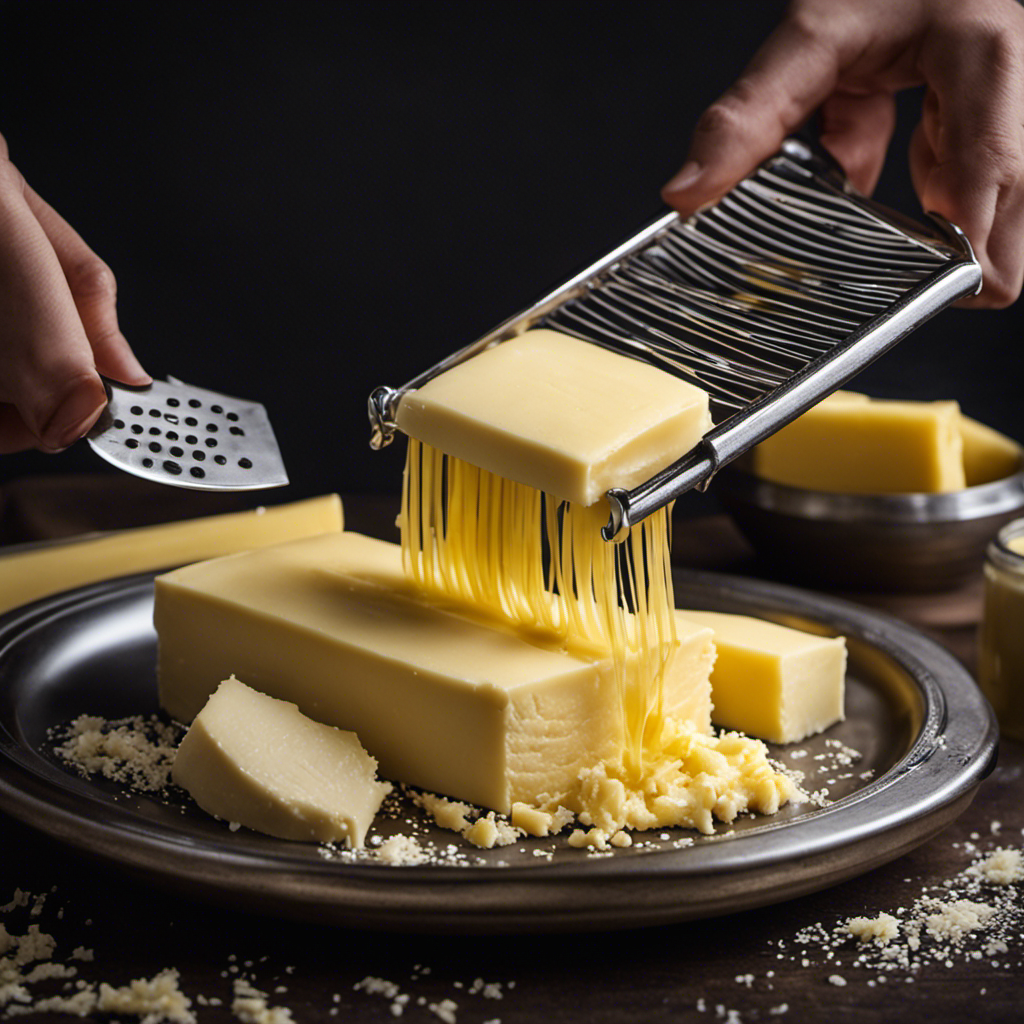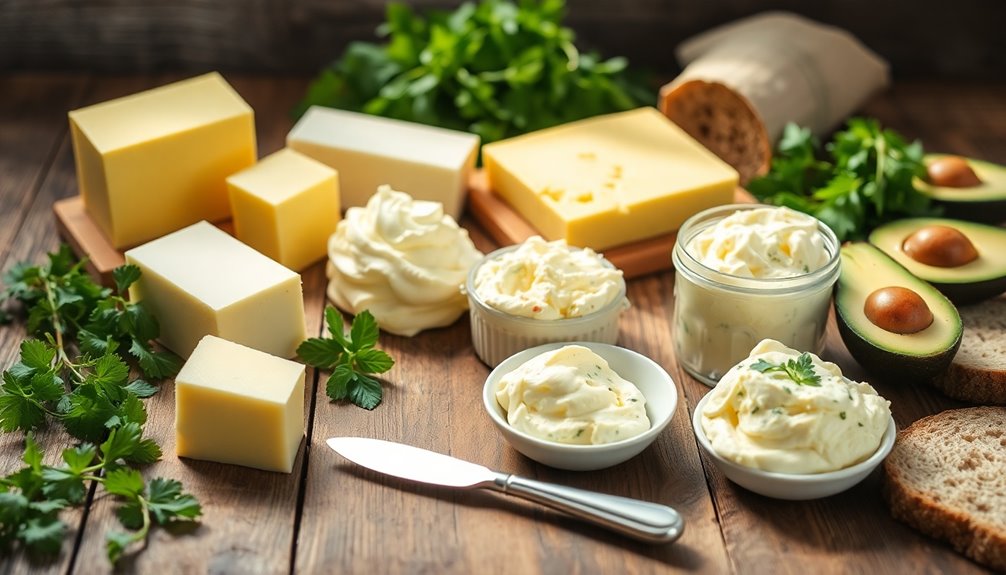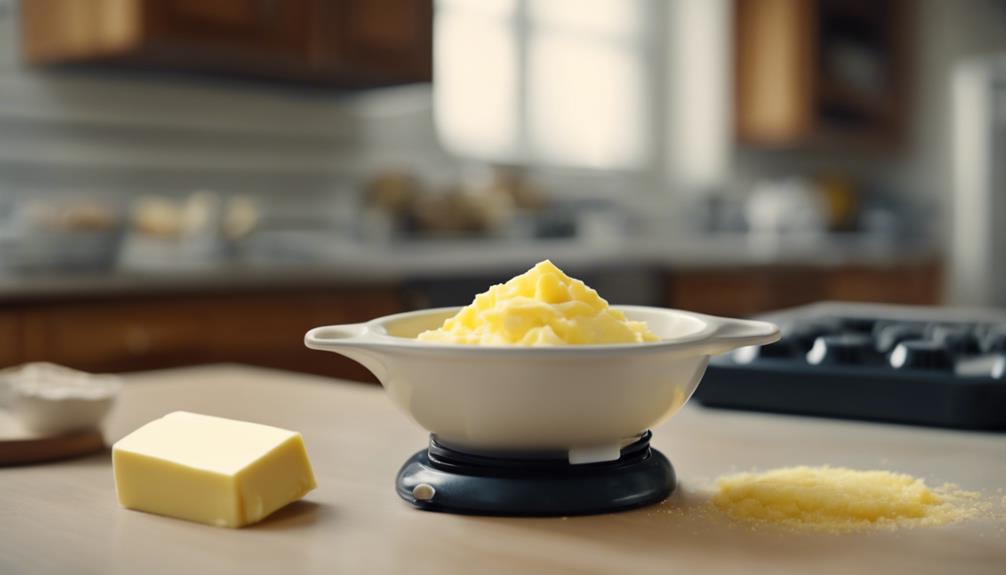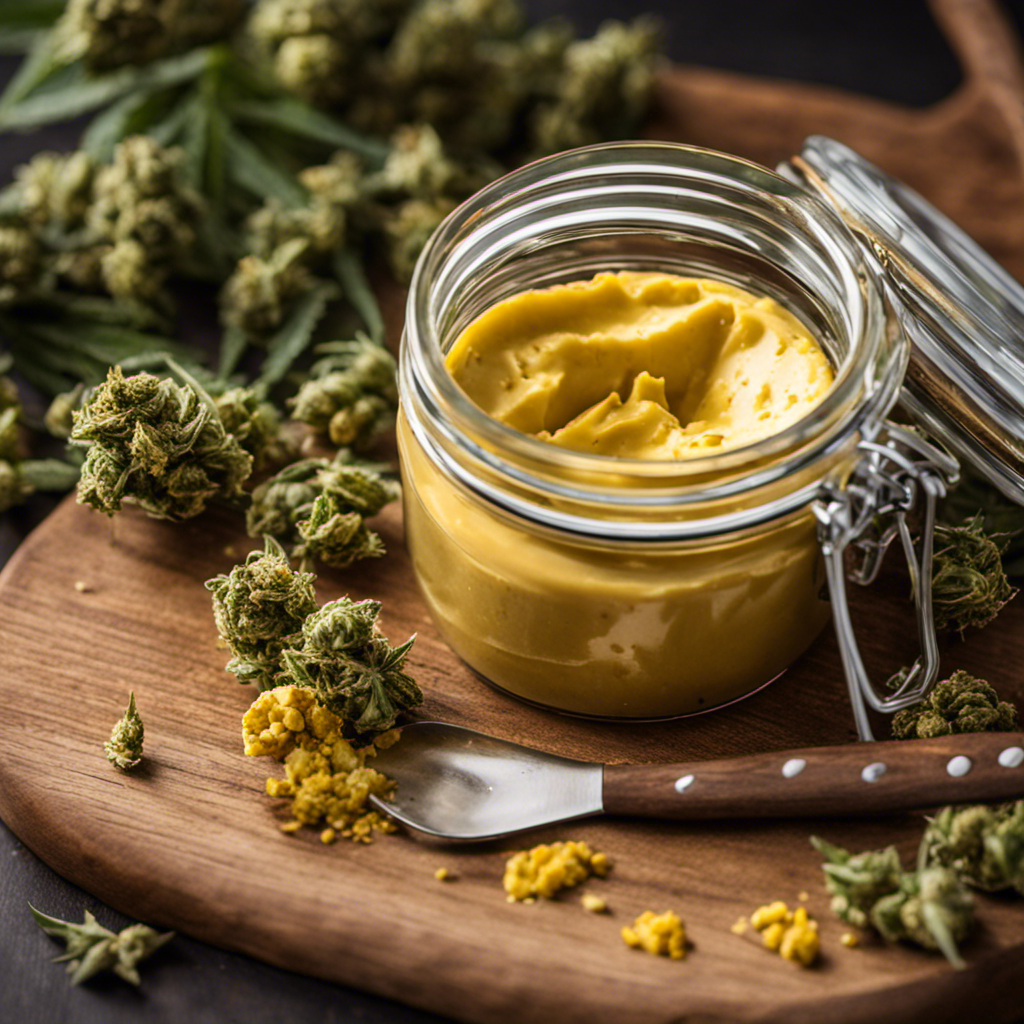Tired of dealing with tough butter stains on your favorite clothes? Fear not! We have the ideal simple and efficient solution to remove those pesky stains for you.
In this article, we’ll walk you through the step-by-step process of banishing butter stains for good. From preparing the perfect cleaning solution to laundering the fabric, we’ll provide you with all the expert tips and tricks you need.
Say goodbye to butter stains and hello to spotless clothes!
Key Takeaways
- Acting quickly is important for successful removal of butter stains.
- Gently scrape off excess butter before treating the stain.
- Apply dish soap or laundry detergent and let it sit to break down the grease.
- Consider using alternative stain treatments such as lemon juice and water mixture, vinegar and water mixture, or baking soda paste.
Understanding the Butter Stain
You should first understand the butter stain before attempting to remove it. Butter stains are a common type of grease stain that can be found on various fabrics and surfaces. These stains are caused by the oily nature of butter, which can make them challenging to remove if not treated properly.
When it comes to butter stain removal, it is important to act quickly and follow the right steps. Start by gently scraping off any excess butter using a spoon or butter knife. Then, apply a small amount of dish soap or laundry detergent directly onto the stain and gently rub it in. Let the detergent sit for a few minutes to break down the grease.
Preparing the Cleaning Solution
When it comes to preparing a cleaning solution, there are two key points that you need to keep in mind: the necessary cleaning ingredients and the proper dilution ratios.
First, you need to make sure you have the right ingredients for the specific cleaning task at hand. Different cleaning solutions require different ingredients, so it’s important to do your research and gather the necessary supplies.
Additionally, once you have the ingredients, it’s crucial to mix them in the correct dilution ratios to ensure optimal cleaning effectiveness. Dilution ratios can vary depending on the strength of the cleaning solution needed, so be sure to follow the instructions carefully to achieve the best results.
Necessary Cleaning Ingredients
To remove a butter stain, gather the necessary cleaning ingredients.
You will need a few key supplies to effectively tackle this stubborn stain. First, grab a clean white cloth or paper towel to blot away any excess butter.
Next, you’ll need a mild dish soap or laundry detergent that is safe for the fabric you are treating. You can also use a pre-treatment stain remover if the stain is particularly stubborn.
Additionally, have a bucket or basin filled with warm water ready for the cleaning process. Remember to test any cleaning solution on a small, inconspicuous area of the fabric before applying it to the entire stain.
Proper Dilution Ratios
Make sure to properly dilute the cleaning solution for best results. Dilution techniques are crucial when it comes to removing stains effectively. By diluting the cleaning solution, you can ensure that it is not too concentrated, which could potentially damage the fabric.
To dilute the solution, follow the instructions on the cleaning product label or use a general guideline of one part cleaning solution to three parts water. This ratio will vary depending on the type of stain and fabric you are dealing with, so it’s important to read the instructions carefully.
Proper dilution allows the cleaning solution to penetrate the stain and break it down effectively without causing any harm. So, take the time to dilute your cleaning solution properly to achieve the best stain-removing results.
Blotting the Stain
You’ll want to start by gently pressing a clean cloth onto the butter stain to help absorb as much of it as possible. Avoid rubbing or scrubbing the stain, as this can push the butter deeper into the fabric and make it harder to remove. Once you’ve blotted the stain, it’s time to move on to the next step in the butter stain removal process. But before we do, let’s take a look at some tips for preventing future stains.
| Preventive Measures |
|---|
| 1. Avoid eating buttery foods near delicate fabrics. |
| 2. Use napkins or bibs to protect clothing while eating. |
| 3. Promptly treat any butter spills or stains to prevent them from setting. |
Treating the Stain With Dish Soap
When it comes to treating stains, dish soap can be an effective solution. It has the power to break down and remove grease and oil stains. It is also gentle enough to use on a variety of fabrics.
However, there are alternative stain treatments that you can consider if dish soap is not readily available or if you prefer to try something different.
Additionally, it’s important to learn different stain removal techniques. This ensures that you are using the most appropriate method for each type of stain.
Dish Soap Effectiveness
The dish soap we have at home is really effective at removing butter stains. Dish soap is a versatile and affordable option for treating stains, and it offers several benefits.
Firstly, dish soap is designed to cut through grease and oil, making it particularly effective for removing butter stains. Its powerful surfactants break down the fats in the butter, allowing them to be easily washed away.
Additionally, dish soap is readily available in most households, making it a convenient option for immediate stain treatment. It is also gentle on fabrics and does not contain harsh chemicals that may damage or discolor the material.
Overall, using dish soap as a stain treatment is a practical and effective choice. However, if you’re looking for alternative stain treatments, there are other options to consider.
Alternative Stain Treatments
Using alternative stain treatments can be a great way to tackle tough stains without relying solely on dish soap. When it comes to removing butter stains, there are several natural remedies and alternative methods that can effectively break down and lift the stain from the fabric. Here are some options to consider:
| Method | Ingredients | Steps |
|---|---|---|
| Lemon Juice | Lemon juice, water | Apply lemon juice and water mixture to the stain and let it sit for 15 minutes. Rinse with cold water. |
| Vinegar | White vinegar, water | Mix equal parts vinegar and water. Apply to stain and let it sit for 30 minutes. Rinse with cold water. |
| Baking Soda | Baking soda, water | Make a paste using baking soda and water. Apply to the stain and let it sit for an hour. Wash as usual. |
These alternative methods can be effective in removing butter stains and are a safer and more environmentally friendly option compared to harsh chemicals. Transitioning into the subsequent section about ‘stain removal techniques,’ it is important to consider the specific techniques that can be used to effectively treat different types of stains.
Stain Removal Techniques
One effective way to tackle tough stains is by employing a variety of stain removal techniques.
When it comes to butter stains, it’s important to understand their causes and take steps to prevent them in the first place. Butter stains can occur when butter or oil-based products come into contact with fabric, leaving behind greasy marks that can be challenging to remove. To prevent butter stains, be cautious when handling or consuming butter, and avoid spills or splatters.
However, if a butter stain does occur, don’t panic. There are several techniques you can try to remove it, such as blotting the stain with a clean cloth, applying dish soap or laundry detergent, and using a stain pre-treatment spray. These methods will help loosen and lift the butter stain, preparing it for the next step of applying a stain remover.
Applying Stain Remover
First, you’ll want to apply the stain remover directly to the butter stain. There are a few effective options to choose from when it comes to stain removers. Vinegar and baking soda are two household items that can work wonders in removing butter stains. Vinegar is a natural acid that can break down the oils in the stain, while baking soda acts as a gentle abrasive to lift the stain from the fabric. Here is a table that illustrates the steps for using vinegar and baking soda as stain removers:
| Steps | Vinegar | Baking Soda |
|---|---|---|
| Step 1 | Dampen the stain with vinegar. | Sprinkle baking soda on the stain. |
| Step 2 | Gently rub the vinegar into the stain. | Scrub the baking soda into the stain with a toothbrush. |
| Step 3 | Allow the vinegar to sit for 10 minutes. | Let the baking soda sit for 30 minutes. |
Once you have applied the stain remover, you can move on to laundering the fabric.
Laundering the Fabric
To properly launder the fabric, you’ll want to start by checking the care label for any specific washing instructions. This will ensure that you are using the correct laundering techniques for your particular fabric. If there are no specific instructions, you can follow these general steps.
First, treat the butter stain with a stain remover before washing. Gently rub the stain remover into the fabric using a clean cloth or sponge. Let it sit for a few minutes to penetrate the stain.
Then, wash the fabric in the washing machine using the appropriate water temperature and detergent. Make sure to separate light and dark colors to prevent color bleeding.
After the wash, check to see if the stain is completely gone before drying. If not, repeat the process or consider seeking professional help.
Drying and Inspecting the Stain Removal
After laundering the fabric, you’ll want to carefully inspect it to ensure that the stain has been completely removed before drying. Here are some tips for drying and inspecting the stain removal:
-
Choose the appropriate drying technique: Different fabrics require different drying techniques. Follow the care label instructions for the fabric to avoid any damage during drying.
-
Air drying: If the fabric allows, air drying is often the best option as it reduces the risk of shrinking or damaging the fabric. Hang the fabric in a well-ventilated area away from direct sunlight. Use clothespins or hangers to prevent creases or wrinkles.
-
Machine drying: If the fabric allows machine drying, use a low heat setting to prevent any potential damage. Remove the fabric from the washing machine promptly to avoid any additional wrinkles.
-
Check for residue: Before fully drying the fabric, inspect it carefully for any remaining butter residue. Look for any discoloration or greasy spots that may indicate the stain hasn’t been completely removed.
Conclusion
Congratulations! You’ve successfully banished that stubborn butter stain from your favorite fabric.
Now, your clothes can once again shine like a star in the night sky.
Remember, knowledge is power, and armed with the right cleaning solution and a little bit of patience, no stain is too tough to conquer.
So, go forth and fearlessly face the buttery challenges that come your way, knowing that you have the power to remove them with ease.
Stay clean, my friend!
